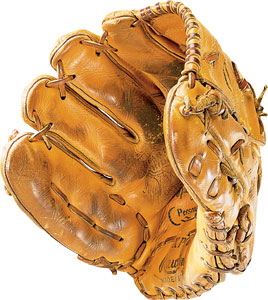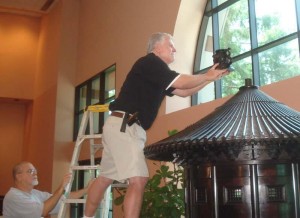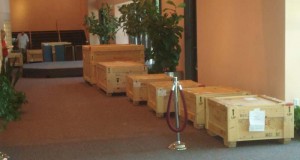naturalist center expands its branches
The York County Culture and Heritage Museums are on a roll! Just a few months ago, the Museum of York County celebrated its 60th Anniversary by opening its first Naturalist Center, modeled after the Smithsonian’s Naturalist Center. And just a few weeks ago, the they added a new museum, the Main Street Children’s Museum.
The Museum of York County received assistance in developing the Naturalist Center from the manager of the Smithsonian’s Naturalist Center, Richard Efthim. The center provides a unique and engaging atmosphere for inquiry-based learning. It brings students, teachers, artists and others who are interested in natural history together with collections of objects, scientific equipment, technology, books and references. The center is filled with taxidermy animals such as lions, Cape buffalo and a giraffe. In addition to a painstakingly detailed, wildlife-filled African plains recreation, visitors can touch more than 1,000 specimens such as the skulls of big cats and buffalo hooves. Center Curator of Natural History, Steve Fields, encourages visitors to open drawers filled with fossils and other specimens and handle them for closer inspection. Teachers are encouraged to bring their students to the center to apply their lesson plans using some of the specimens from the collection. The Naturalist Center at the Museum of York County provides a hands-on, discovery-based approach to learning using hundreds of natural history specimens, many of which are on view to the public for the first time. Participants may enjoy self-guided discovery and educational programs and handle mounted specimens, skins, skulls, rocks, minerals, and fossils from all corners of the globe.
The new Main Street Children’s Museum opened to the public on December 2, 2010. Smithsonian Affiliations’ Director, Harold Closter, was present to give remarks. The design of the Main Street Children’s Museum was inspired by the artworks of late local artist Vernon Grant. The museum serves as a center for early childhood education, with a focus on infants to age 6. Children are encouraged to utilize their creative and developmental skills through interactive exhibits and role-playing with audio and visual experiences. Some highlights of these exhibits include: an interactive Tree House, where children can climb to new heights; a Baby Pumpkin filled with toys and areas of seating; a Dress Up Vault, where children dress up in costumes and learn to role-play; a Sailing Ship, where children can engage in several sailing related activities; and lastly a Train Table with wooden building blocks and train sets to engage the future engineers!
The York County Culture and Heritage Museums’ activity with the Smithsonian doesn’t stop there. Now they are in the planning stages to build a new Records Center that will house the museum’s archives and collections. Latasha Richards, collections manager, will visit the Smithsonian in Washington D.C. to meet with staff at the National Museum of the American Indian, Smithsonian American Art Museum and the National Portrait Gallery to learn more about space planning, organizing, and moving in January 2011. Check the Affiliate blog in January for a recap of her visit.



























